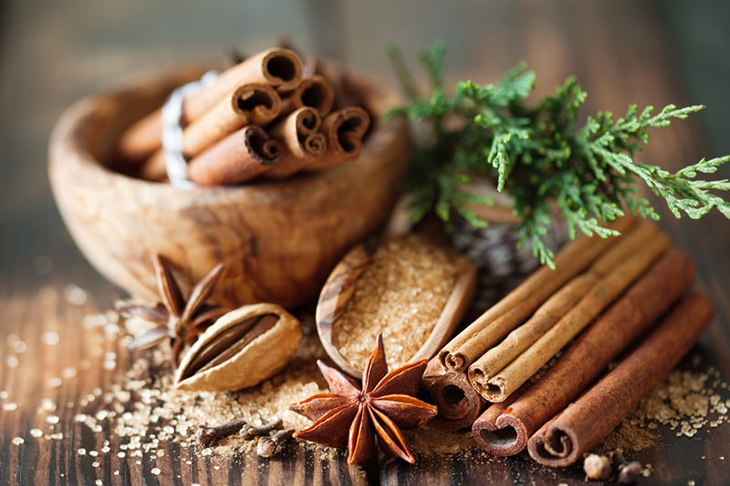
The aromatic trio of cinnamon, nutmeg, and clove evokes a myriad of sensory experiences, but perhaps none so universally resonant as the festive ambiance they create in American kitchens during the holiday season. Yet, while these spices are synonymous with seasonal delights like mulled wine, gingerbread cookies, and pumpkin spice lattes in the West, their historical significance in Asia transcends mere culinary applications, delving into the realm of medicine.
In South Asian traditions, cinnamon, nutmeg, and cloves have long been revered for their medicinal properties, earning them the esteemed title of “nutraceuticals.” This term encapsulates their status as foods rich in compounds that not only nourish the body but also exhibit pharmacological potential akin to synthetic drugs. Scientific research has unveiled a treasure trove of health benefits associated with these Christmas spices, attributing their potency to a potent blend of antioxidants and other nutrients.
Antioxidants, the guardians against oxidative stress and its associated maladies, play a pivotal role in maintaining health and vitality. The molecules, aptly named for their ability to neutralize harmful free radicals, are particularly abundant in cinnamon, nutmeg, and cloves. These spices boast an impressive antioxidant capacity, as evidenced by their high ORAC values—a scale devised by scientists to measure the antioxidant potential of foods.
ORAC stands for Oxygen Radical Absorbance Capacity. It is a measure of the antioxidant capacity of foods and other substances. To further explain, the ORAC value measures how well a substance can neutralize harmful free radicals in the body. Free radicals are unstable molecules that can cause damage to cells and contribute to various diseases, including cancer and heart disease. Antioxidants help to neutralize these free radicals, thereby protecting cells from damage. The ORAC value is typically expressed as a number, representing the antioxidant capacity of a specific food or substance. The higher the ORAC value, the greater the antioxidant capacity of the food or substance.
Among the elite ranks of antioxidant-rich foods, ground clove reigns supreme, boasting an ORAC value of 290,000. To put this into perspective, it surpasses the antioxidant potency of cranberries by tenfold, eclipses raspberries by nearly nineteen-fold, and dwarfs the humble orange by almost thirtyfold. Cinnamon and nutmeg, while slightly lower on the ORAC scale, still exhibit formidable antioxidant prowess, further solidifying their status as nutritional powerhouses.
Beyond their culinary allure, these South Asian spices serve as potent guardians of health and well-being, offering a tantalizing blend of flavor and therapeutic benefits. Whether adorning holiday desserts or enriching traditional remedies, cinnamon, nutmeg, and clove continue to captivate hearts, minds, and palates around the globe, embodying the essence of culinary and medicinal synergy.

Oxidative stress, once considered the primary culprit behind aging, underscores the critical significance of integrating high-quality antioxidants into our diets. These antioxidants play a pivotal role in mitigating the damage caused by free radicals, thereby potentially slowing down the aging process and promoting overall health and longevity.
A comprehensive literature review conducted by the Osher Center for Integrative Medicine at Vanderbilt sheds light on the remarkable medicinal properties of spices. Among the noteworthy findings, certain spices like garlic and turmeric emerge as potent functional medicines. However, the challenge lies in the fact that not everyone appreciates their taste. This is where the appeal of Christmas spices such as cinnamon, nutmeg, and cloves becomes evident.
These aromatic spices are widely cherished not only for their delightful fragrance but also for the comforting warmth they impart, making them more palatable for individuals less accustomed to cooking with herbs and spices.
Cinnamon, for instance, has been shown to exhibit various health benefits. It can slow down gastric emptying, thereby helping to regulate post-meal blood glucose levels. Additionally, its volatile oils possess antifungal and antibacterial properties, with studies suggesting a potential role in managing type 2 diabetes. Incorporating cinnamon into one’s diet, whether through spicy chai tea or sprinkled on yogurt and baked goods, can be a delicious and healthful choice.
Ground cloves, a staple in Ayurvedic medicine, boast potent medicinal properties. Even in small amounts, the oils present in cloves have been demonstrated to combat tuberculosis bacteria and exhibit anti-inflammatory effects akin to common drugs like paracetamol. Moreover, cloves serve as effective iron chelators and antioxidants, potentially offering protection against conditions like breast cancer and retinal degeneration.
Nutmeg, another versatile spice, has been extensively studied for its therapeutic potential. Essential nutmeg oil shows promise in combating pathogenic bacteria and has historically been utilized in treatments for various ailments ranging from rheumatism to nausea. Furthermore, nutmeg demonstrates antidiarrheal and potentially antidepressant effects, highlighting its multifaceted role in traditional medicine practices.
Recent research suggests that nutmeg’s phytonutrient composition may contribute to bone metabolism, allergen suppression, and inhibition of lipid peroxidation. Studies conducted on mice indicate that nutmeg extract can effectively improve liver function, reduce blood glucose and cholesterol levels, and alleviate inflammation.
Moreover, preliminary findings hint at nutmeg’s potential in cancer treatment, with studies suggesting its efficacy against colon cancer, breast cancer, and lung cancer cells. These promising discoveries underscore the remarkable therapeutic potential of nutmeg and its role as a valuable asset in both culinary and medicinal realms.



